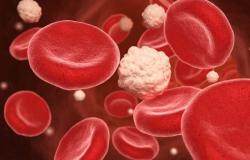A survey by Fiocruz Minas analyzed the access of the Homeless Population (PSR) to emergency measures adopted in the areas of health and social assistance during the Covid-19 pandemic, in the city of Belo Horizonte. The study outlined an unprecedented panorama, showing the services that most reached this audience, the main obstacles encountered by people when seeking care, the challenges faced by health and social care managers and workers, the innovations implemented in the midst of the crisis, among other aspects . The research also presented an updated profile of PSR in the capital of Minas Gerais, contributing to filling a data gap and enabling the improvement of public policies aimed at populations vulnerable to health emergencies.
To reach the results, the researchers were based on data related to PSR, available in government databases in the areas of health and social assistance, and looked at management documents produced by the City of Belo Horizonte (PBH), between March 2020 and December 2021, related to fighting the pandemic. Furthermore, from 2021 to June 2022, interviews were carried out with homeless people, people with experience of living on the streets, workers and managers related to health and social protection services, representatives of the public defender’s office and society civil society organized with initiatives to serve this population. In total, there were 48 semi-structured interviews and four focus groups, totaling 86 interviewees.
“After collecting all this material, we triangulated qualitative and quantitative data, in order to contemplate the different variables that affect PSR and expand the understanding of the results, since qualitative analysis helps to explain what was found in the quantitative. Furthermore, a Monitoring Committee was established, made up of managers and health and social assistance workers from different areas and functions and representatives of the Pastoral Nacional do Povo da Rua (Pastoral da Rua) and the Movimento Nacional da População em Situação de Rua (National Movement for the Homeless Population). , which, throughout the research, contributed to correcting data inconsistencies, facilitating researchers’ entry into health equipment and social assistance services to collect information, as well as in spaces organized by Pastoral da Rua, remedying difficulties encountered along the way research, in addition to discussing and qualifying the research results”, explains researcher Anelise Andrade de Souza, one of the study coordinators.
Results
Regarding the profile, the quantitative analysis found that the PSR in Belo Horizonte is mostly adults, male, black, with incomplete primary education. However, during the pandemic, there was a tendency to change this pattern, with an increase in women on the streets and people with greater education. The qualitative analysis showed, among all interviewees, the perception of an increase in PSR after the beginning of the health emergency. “In the interviews, the main reasons given for this increase were job loss, inability to pay rent, migration from the countryside to the capital in search of a job and family conflicts arising from the increase in shared time spent in isolation at home”, explains Anelise.
Another aspect analyzed was the number of healthcare services allocated to PSR. The researchers adopted a time frame of one year before and one year after the start of the pandemic, between 2019 and 2021. According to the quantitative analysis, there were 47,971 consultations before the health emergency, covering 9,999 people, and 37,912 after the start of the pandemic, covering 7,707 people. In emergency services, 8,099 consultations were observed before the health emergency, referring to 4,110 people, and 4,324 consultations during, aimed at 2,393 people. There was, therefore, a drop in the number of appointments, which was more pronounced in the first months of the pandemic; Subsequently, the health network managed to increase the number of visits to homeless people with respiratory symptoms and also resume the number of visits for other complaints.
“When we analyzed the documents generated by PBH, we saw that, initially, the main guidance for the population was to avoid using the health system with issues unrelated to Covid-19 or with mild symptoms, so as not to cause crowds that could increase the risk of disease transmission. The interviews showed us that this guidance kept HP away from health services, even for care for chronic conditions that should not be interrupted”, highlights Anelise. According to the researcher, the analyzes also showed that, in the initial months of the pandemic, health management had difficulties in reorganizing the system, but, as the months went by, the services adapted and included new flows and guidelines for respiratory symptoms. “This coincides with the period found in the quantitative analysis of the increase in PSR consultations with respiratory symptoms and the resumption of consultations for other complaints”, explains the researcher.
The quantitative data also showed that health services were affected by Covid-19 contagion peaks, which occurred in the months of July and December 2020. One of the measures adopted to respond to this increase in transmission was the determination that each region would have a Health Center temporarily converted into a 24-hour non-Covid-19 Care Unit, with the aim of absorbing the excess volume of UPAs. Users linked to these units converted into emergency support were referred to other Health Centers, a change that affected the PSR, since the Carlos Chagas Health Center, located in the central region of the city and considered a reference for serving this public, was converted to emergency services. According to the health workers interviewed, this change broke the bonds of frequent users, with its effects being noticed even after returning to care at the unit.
With regard to mental health, quantitative data indicated that there was an increase in visits to psychosocial care centers, from 4,354 visits before the pandemic to 4,622 during the health emergency. Qualitative data showed that this increase was considered by workers to be a consequence of the pandemic context, due to the economic crisis resulting from the period, which, in turn, influenced the increase and worsening of psychosocial crises.
Barriers
In the area of social assistance, a significant obstacle to PSR access was the change in the functioning of CREAS, regional reference centers that coordinate a large part of the special social protection network, whose activities were suspended during the first two months of the pandemic and , subsequently, they operated remotely until the seventh month of the city’s closure. Furthermore, Bolsa Família, the main Brazilian income transfer program, had its entry registration suspended for 120 days by the federal government and, subsequently, the updating of registration in CadÚnico, a prerequisite for the program, became exclusively for remotely in BH.
The documents analyzed also showed that only two social assistance services were considered essential to remain in operation during the pandemic, and even then, with restrictions. The services that maintained their operation were the SEAS, which carries out approaches on the street, and the POP Centers, a space to eat meals, take care of personal hygiene, store belongings and clarify doubts. On the other hand, faced with the increase in demand, social assistance management implemented expansions of its services, creating a third POP Center, in 2020, and expanding, in 2021, one that already existed.
Among health workers, one of the main difficulties mentioned occurred at the beginning of the pandemic, when different guidelines were published through technical notes, causing disorganization of workflows. Workers reported difficulty communicating with managers and insecurity regarding protocols; Managers said that this was due to the speed at which the pandemic unfolded and the initial lack of knowledge about the disease.
Another point noted in the qualitative analysis was a delay of around three months after the start of the pandemic in leveling information among health and social assistance workers. Furthermore, it was found that the absence of a shared information system between public services brought integration difficulties.
On the other hand, the analyzes showed that the existence of a shared concern about the vulnerability of PSR allowed the execution of intersectoral actions during the pandemic, bringing managers and health care workers together. The health and social assistance services were those that stood out the most as an effective way to reach the target audience. “A consensus among all those interviewed is that the closure of the city brought barriers to accessing basic needs for the PSR, as its survival depended on actions linked to movement on the streets. In this sense, the work of the flying teams was fundamental, as it enabled the distribution of inputs to meet the basic health and food needs of this population, especially in the first months”, says Anelise.
Innovations
The analyzes also showed that, during the health emergency, there was room for innovation, such as the implementation of an intersectoral service with mixed management between the health and social assistance departments, which became known as Emergency Reception. Flows were established for screening and referral of respiratory symptoms suspected of having Covid-19 without clinical indication for hospital admission. Initially, 260 vacancies were made available for the 14-day period of social isolation, but later, due to the lack of demand, 22 vacancies began to be offered, which, at another time, reached 30. “Managers and workers at the health state that there were few cases of illness among PSR in proportion to the general population. The reasons attributed were the closure of the city, which reduced PSR’s contact with the general population of the city, and because they spent most of their time in open spaces”, explains the researcher.
Another aspect mentioned by users, workers and managers of health and social assistance was the significant positive impact of the initiatives of Sociedade Civil Organizada Pastoral da Rua, which promoted systematized care and referral actions, promoting the integration of health and social assistance networks, as well as such as mobilizing other entities and public bodies to care for PSR during the pandemic. Two main actions stand out: a day-stay facility and intersectoral services in the city center, called Canto da Rua Emergencial, and housing facilities for temporary shelter and psychosocial support for PSR. “All those interviewed pointed to these services, especially Canto da Rua Emergencial, as important points of reference and support in the PSR care network during the pandemic”, says Anelise.
For the researcher, the set of quantitative and qualitative evidence collected in the study shows more emergency interventions that functioned as facilitators of access to PSR than measures that constituted barriers. But, according to her, one factor was fundamental to the success of the actions: Belo Horizonte already had robust health and social assistance systems, with services designed specifically to care for PSR.
“When we started the research, at the beginning of the pandemic, we already knew that BH had a well-established SUS and social assistance structure. The study confirmed that this structure supported the emergency measures implemented, facilitating PSR’s access to services. However, it is necessary to create mechanisms to overcome the barriers arising from emergency measures, such as the closure of the city. Movement on the streets influences the way of life of PSR, who begin to face difficulties in meeting their basic needs, and, therefore, assistance cannot be discontinued. Ideally, there should be no people living on the streets, but as long as there are, it is necessary to improve this public’s access to services, without losing sight of the need to develop public policies to get them out of this situation”, highlights Anelise.
Tags: Study analyzes access homeless people assistance pandemic
--





